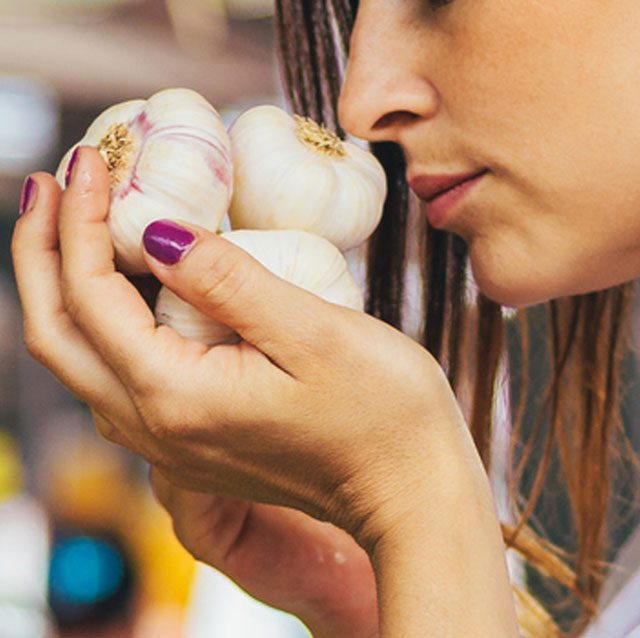Although a fever may suppress your appetite, the reality is that when you have a fever, your body is burning more calories than usual. To combat infection, you also need to replenish energy and nutrients from food to boost your immune system and recover quickly from the fever.
Below are the foods you should and shouldn’t eat when you have a fever, along with some important notes to remember, according to Livestrong.
1. What to Eat When You Have a Fever?
1.1. Yogurt
Yogurt and other fermented foods such as sauerkraut are excellent sources of probiotics, which help enhance gut microbiota and promote healing. When beneficial bacteria thrive in the gut, the immune system benefits as the gut and probiotics help eliminate harmful bacteria, acting as the body’s first line of defense against colds and flu.
Additionally, yogurt is an amazing source of protein, so even if your fever makes you feel less hungry, a cup of yogurt can still provide you with a lot of nutrients.
1.2. Chicken Soup

Chicken soup is a food to consume when you have a fever due to its ability to clear nasal passages by promoting the thinning of mucus caused by congestion and keeping the body warm against symptoms like chills and shivering. It also provides some amino acids that help combat the invasion of flu viruses.
Chicken soup is easy to digest, filling, and a good source of protein for those who are ill with a fever. You should eat chicken soup while it’s hot to soothe a sore throat and make your body feel more comfortable.
1.3. Coconut Water
When you have a fever, it’s important to stay hydrated. Adding fluids helps regulate body temperature, suppress infections, and transport essential nutrients to the cells in your body.
Coconut water not only replenishes important electrolytes lost through sweat during a fever, but it also has a delicious flavor and is easy to drink. Just make sure you are drinking natural coconut water without any added sugars or flavors.

Coconut water is rich in electrolytes, making it great for those with a fever (Image: Internet)
1.4. Fruits
Most fruits contain at least 80% water, making them a top choice when considering what to eat during a fever. Besides hydrating, fruits also provide a good amount of vitamin C, which is essential for immune responses and cell repair rates.
You can eat vitamin C-rich fruits such as strawberries, kiwis, oranges, tangerines, and blueberries to boost your immune system and help fight off infection-related fevers. However, remember that some fruits, especially those with seeds and skins that are high in fiber, can be hard to digest when you have a fever (as the digestive system may not be at its best), so bananas, avocados, apples, and citrus fruits might be better options as they are gentler on the digestive system.
1.5. Cooked Vegetables
Like fruits, vegetables also provide essential vitamins and minerals to boost immunity and help you recover from a fever.
Vegetables such as carrots, onions, and celery added to chicken soup are a great suggestion for someone with a fever needing to replenish nutrients. Note that some fiber-rich vegetables can cause bloating and gas if eaten raw, so you should eat cooked vegetables to reduce the burden on the digestive system, which is already focusing on fighting infections.
1.6. Protein-Rich Foods
When it comes to nutrients that help fight infections, protein tops the list. This is because the body needs protein to produce antibodies that protect against damage caused by invading pathogens.
Protein-rich foods such as beans, nuts, lean meats, and poultry rich in zinc and selenium are also essential to enhance the immune system during this time. Additionally, eggs, which are high in vitamin D, are another excellent source of protein that you can include in your diet when ill with a fever.
1.7. Garlic and Ginger
Common spices in Vietnamese kitchens such as garlic and ginger have long been known as natural ways to reduce fever and boost immunity.
Garlic contains allicin—a compound with antibacterial properties that can help reduce inflammation and fever, as well as soothe cold symptoms. Ginger is another spice that can support the immune system thanks to compounds like gingerol and shogaol, which have powerful anti-inflammatory properties and can reduce nausea and vomiting.

Garlic is a natural spice that can help lower fever. (Image: Internet).
2. What to Avoid When You Have a Fever?
If you are experiencing a fever, be cautious with the following foods that may slow your recovery:
- Alcoholic beverages, soda, and caffeine can lead to dehydration, while fever already causes your body to lose fluids.
- Sugary foods and drinks, especially processed foods can increase inflammation in the body and hinder the immune system’s response to fever and pathogens. Therefore, limit foods such as pastries, candies, sugary cereals, ice cream, and soft drinks while you have a fever.
- Processed meats like sausages, bacon, and deli meats should also be avoided when you have a fever.
3. Important Notes When You Have a Fever
A fever is not an illness, and its symptoms are similar. Depending on your condition, you will determine what measures to take to lower the fever. When you have a fever, you may experience the following symptoms: fatigue, loss of appetite, headaches, muscle aches, sweating, chills, nausea, vomiting, and rashes. If you have a fever, you should:
- Try to lie down and rest.
- Stay hydrated by drinking plenty of fluids and electrolytes to replenish lost fluids.
- Take over-the-counter medications like acetaminophen to reduce fever according to the instructions on the package.
- Keep your body cool by removing excess clothing and blankets unless you feel cold.
- Avoid contact with others until you are fever-free.

Prioritize rest and hydration when you have a fever. (Image: Internet).
In the case of high or persistent fevers, seek medical attention as soon as possible.
Above are the guidelines on what foods to eat and avoid when you have a fever that you may refer to. Remember not to skip meals when you have a fever but to eat enough to provide your body with energy to fight off the fever, preventing your body from starting to break down muscle tissue for energy, which can leave you feeling weak.
In other words, if you feel too unwell to eat solid foods, try drinking nutrient-rich smoothies or soups. Having a little food in your stomach will help you feel better while still providing your body with the necessary energy to combat infection.



















































